






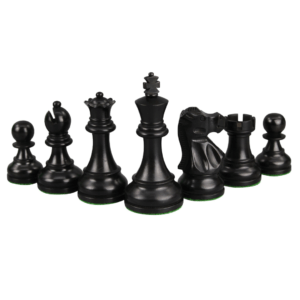

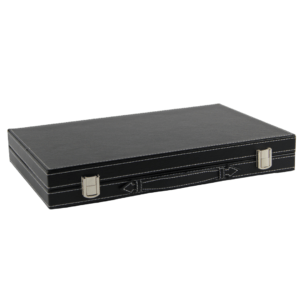
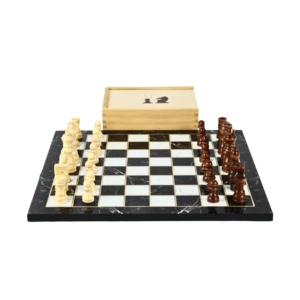



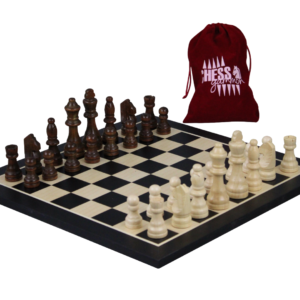

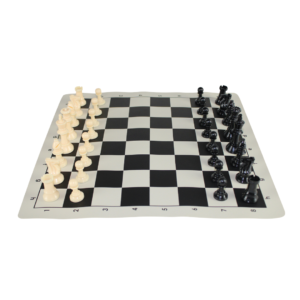



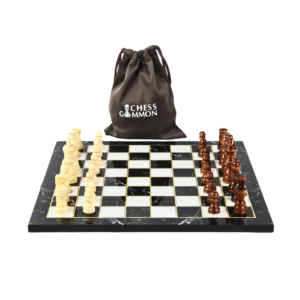



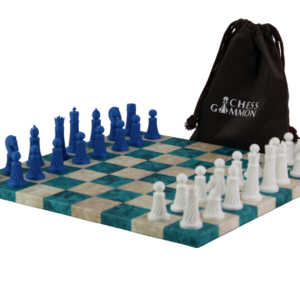
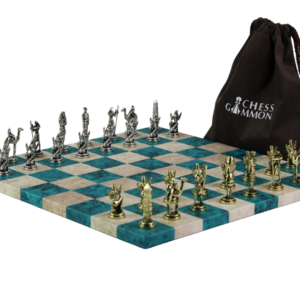
Chess, often referred to as the “game of kings,” is more than just a pastime—it’s a symbol of intellect, strategy, and tradition. Played by millions around the world, chess transcends borders, languages, and cultures. Central to this centuries-old game is the chess set itself: the board and pieces that turn strategy into tangible reality. Whether carved from rare wood by skilled artisans, mass-produced for casual play, or crafted into decorative art pieces, chess sets come in many forms, each carrying its own story and character.
For players and collectors alike, a chess set isn’t just a tool—it’s an expression of craftsmanship, history, and personal taste. In this comprehensive guide, we’ll explore the rich history of chess sets, how they’re made, the craftsmanship behind handmade sets, their weight and balance, who uses them, and how to select the perfect set for your needs.
The origins of chess can be traced back over 1,500 years to Northern India, where the game was known as Chaturanga. This early form of chess eventually spread to Persia, becoming known as Shatranj after Islamic conquest. When the Moors brought the game to Europe through Spain, chess underwent significant evolution—both in its rules and the design of its pieces.
Early chess sets reflected the cultural and artistic influences of their regions. In Persia and the Islamic world, religious prohibitions on representational art led to abstract, geometric designs. When the game reached medieval Europe, chess sets began to feature more elaborate, figurative representations of kings, queens, knights, and bishops. This period saw the chess pieces begin to take on the familiar forms we recognise today.
The most pivotal moment in chess set design came in 1849 with the introduction of the Staunton chess set. Named after Howard Staunton, a renowned British chess player, this set was designed to offer a standardised, easily recognisable style. Created by Nathaniel Cook and manufactured by Jaques of London, the Staunton set was simple, elegant, and practical. Its clarity and balance quickly made it the official design for competitive play. Today, nearly all international tournaments use Staunton-style sets, a testament to its enduring appeal.
Over the centuries, chess sets have diversified in both design and purpose. While the Staunton set remains the international standard for competitive play, there are many different types of chess sets available for various uses and tastes.
For serious players, tournament chess sets are the most common. These sets typically follow strict size and design standards set by the World Chess Federation (FIDE), ensuring consistency across official games. These sets are designed with practicality in mind, featuring weighted pieces for stability and boards with clearly defined squares.
For those who travel frequently, travel chess sets offer compact, portable options. These sets often feature magnetic pieces and folding boards for convenience, allowing players to enjoy the game on the go without sacrificing functionality.
On the opposite end of the spectrum are decorative and luxury chess sets, which are designed more for display than gameplay. These sets are often crafted from premium materials like marble, glass, or rare woods and can feature intricate artistic designs. Many collectors value these sets for their aesthetic beauty and craftsmanship.
In the modern era, technology has also given rise to electronic chess sets. These sets often include digital boards that can record moves, connect to online platforms, or even play against users with built-in AI. They’re particularly popular among tech-savvy players who want to blend traditional gameplay with modern convenience.
The production of a chess set can range from a highly industrial process to an intricate handmade craft, depending on the materials used and the intended purpose of the set. The materials chosen play a significant role in the set’s appearance, weight, and durability.
Traditionally, wood has been the most common material for chess pieces and boards. Light woods such as boxwood or maple are typically used for the white pieces, while darker woods like ebony, rosewood, or walnut are used for the black pieces. Wooden sets can range from simple, functional designs for casual play to intricately carved works of art valued by collectors.
The manufacturing process for wooden chess pieces typically begins with selecting high-quality blocks of wood. These blocks are then cut and turned on a lathe to create the basic shape of each piece. Skilled artisans carve finer details by hand, especially for more intricate designs like knights, which often require detailed shaping to capture the essence of a horse’s head. Once carved, the pieces are sanded, stained, and polished to achieve a smooth, refined finish.
Mass-produced chess sets, especially those made from plastic or resin, are manufactured using molds. This method allows for faster production and consistency in shape and size, making these sets affordable and widely available. While they lack the unique craftsmanship of handmade sets, they are highly practical for everyday play and tournament use.
Luxury sets might also incorporate materials like metal, glass, or stone. Marble and onyx sets are particularly popular as decorative items, featuring beautiful natural patterns that make each piece unique. Metal chess sets, often made from brass or pewter, offer a sense of weight and durability that many collectors find appealing.
Handmade chess sets represent the pinnacle of craftsmanship in the world of chess. These sets are often produced by highly skilled artisans who dedicate countless hours to perfecting each piece. Unlike mass-produced sets, every handmade piece is unique, reflecting the skill, creativity, and passion of the craftsman.
Creating a handmade chess set begins with selecting premium materials, whether it’s a fine-grained wood, marble, or even precious metals. Artisans use traditional hand tools, such as chisels and carving knives, to shape the pieces with incredible precision. Each piece undergoes multiple stages of refinement, from initial rough carving to delicate detailing and finishing.
One of the most challenging aspects of creating a handmade set is ensuring consistency across all pieces. Each pawn, rook, or knight must match its counterparts in size, shape, and style. For luxury sets, artisans often incorporate intricate details, such as engraved patterns, inlays, or even gemstones.
The result of this painstaking process is a one-of-a-kind chess set that is both functional and a true work of art. Handmade chess sets are often passed down through generations, becoming cherished family heirlooms.
The weight and balance of chess pieces play a crucial role in the gameplay experience. Many high-quality chess sets, especially those designed for tournament play, are weighted to ensure stability and ease of use.
Weighting typically involves embedding small metal discs, often made from lead or iron, into the base of each piece. This additional weight provides a more satisfying feel when moving the pieces and helps prevent accidental tipping during gameplay.
The distribution of weight is equally important. A well-balanced chess piece will feel stable and centred, making it easier to handle and less likely to fall over during fast-paced games. Professional players often prefer heavier sets because the extra weight adds a sense of control and precision, enhancing the tactile experience of playing.
Choosing the right chess set can depend on various factors, including purpose, material, size, and personal taste. The first question to ask yourself is: What will the chess set be used for? If you plan to participate in tournaments or serious games, it’s best to invest in a Staunton-style set that meets FIDE regulations. These sets ensure consistency in size, design, and weight, offering the best playing experience for competitive matches.
For casual players, comfort and style might take precedence. Consider how much space you have for a chessboard and whether you prefer a set that’s easy to store or transport. If you’re an avid traveller, a compact travel set with magnetic pieces could be the perfect choice.
Material preference is another essential factor. Wooden sets offer a classic feel and aesthetic, while plastic sets provide durability and affordability. For collectors, decorative sets made from glass, marble, or metal can serve as stunning display pieces and conversation starters.
Size is also important when selecting a chess set. The pieces should be proportionate to the board, with the King’s base typically occupying about 75% of a single square’s width. A well-proportioned set ensures that the pieces look balanced and that gameplay remains comfortable.
Finally, budget considerations will play a role in your decision. High-quality, handcrafted sets can be expensive but offer longevity and aesthetic appeal. On the other hand, more affordable options can still provide a great playing experience, especially for beginners.
Chess is a universal game, enjoyed by a diverse range of people from all walks of life. Professional players and grandmasters use tournament-grade sets that meet international standards. For these elite competitors, consistency in piece design and board size is essential for serious gameplay.
Casual players and hobbyists often choose chess sets based on convenience and aesthetic appeal. Whether it’s a simple plastic set for relaxed games at home or a decorative wooden board for display, casual players appreciate the balance between functionality and style.
Collectors and enthusiasts seek out rare and unique sets, often focusing on craftsmanship, history, and artistic value. Vintage chess sets, particularly antique Staunton designs from manufacturers like Jaques of London, are highly prized.
Educational institutions, including schools and chess clubs, use affordable and durable sets for teaching and practice. Many schools encourage children to learn chess due to its cognitive benefits, such as improving concentration, memory, and problem-solving skills.
Proper care and maintenance can help preserve the beauty and functionality of your chess set for years to come. The method of cleaning will depend on the materials used in the set. Wooden sets should be dusted regularly and occasionally treated with wood polish to maintain their finish. Avoid exposing wood to direct sunlight or moisture, as this can cause warping or cracking.
Plastic and resin sets are easier to maintain and can usually be cleaned with a damp cloth and mild soap. Metal sets should be kept dry to prevent tarnishing, and any existing tarnish can be removed with a metal cleaner appropriate for the specific type of metal.
For glass, marble, or stone sets, gentle cleaning with a soft cloth and appropriate cleaning solution will keep them looking their best. Regardless of the material, storing your chess set in a protective case when not in use will help prevent dust buildup and accidental damage.
Chess sets have made iconic appearances in popular culture, often symbolising strategy, power, and intellectual prowess. From the tense matches in The Queen’s Gambit to the dramatic chess game in Harry Potter and the Philosopher’s Stone, these moments highlight the game’s enduring appeal and cultural significance.
Famous historical matches, such as the 1972 World Chess Championship between Bobby Fischer and Boris Spassky, have also contributed to the mystique surrounding chess sets. These moments have helped cement chess as not just a game, but a symbol of intellectual rivalry on the global stage.
The chess set is much more than a collection of pieces on a board—it is a testament to centuries of history, artistry, and cultural evolution. Whether handcrafted by skilled artisans, built for competitive play, or collected as a work of art, each chess set carries its own story and significance.
For players, collectors, and enthusiasts alike, choosing the right chess set can enhance not only the gameplay experience but also offer a connection to the rich heritage of this timeless game. From the elegant simplicity of tournament sets to the intricate beauty of handmade luxury collections, the perfect chess set is out there for everyone—waiting to bring strategy, craftsmanship, and tradition to life.